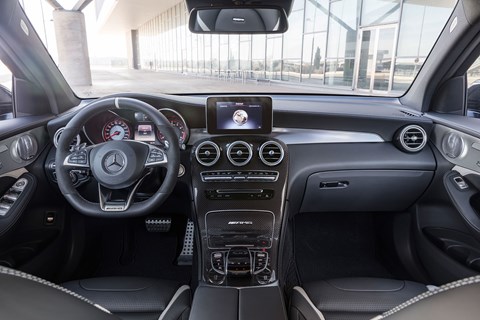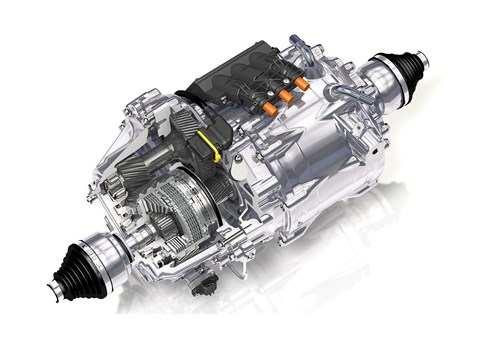► The future of gearbox technology
► Triple-clutch transmissions and more
► We explain the car tech
A 5% improvement in fuel economy is being promised by a new generation of 11-speed triple-clutch transmissions actively under consideration at both GM and Honda.
These and other new transmissions with double-digit numbers of ratios – and highly advanced software – will be much better at keeping engines revving in the sweet spot of maximum efficiency and minimum waste. Although today’s eight- or 10-speed automatics and automated manuals are smarter than older transmissions, they have a massive task ahead if they’re to comply with 2025’s stringent regulatory demands without neutering the engine’s performance.
How many gear ratios is enough?
It’s not long ago that a manual six-speed was thought to be cutting edge and four-speed autos were the norm in two-pedal cars. But as the quest for fuel efficiency has intensified, the gearbox wars have spiralled – brands like Mercedes-Benz have long offered seven, and now nine, cogs.
Now Porsche has a seven-speed manual while Ford, GM and Lexus have all released 10-speed autos; seven-speed DCTs and nine-speed autos are increasingly common.
Where will the ratio race end? According to Ford’s Jim Centlivre, speaking at the recent CTI Transmission Symposium: ‘There are diminishing returns above 10 speeds.’ That’s a view not shared by Darrell L Robinette, assistant professor at Michigan Technological University and the brains behind an 11-speed (plus two reverse ratios) triple-clutch transmission (TCT), developed jointly with GM.

‘I would agree that 10 ratios seems to be the limit, but remember that only a decade ago six speeds were thought to be sufficient. If you can add more gear options with the ability to configure the shift schedule by skipping gears… why not?’ This would, Robinette stressed, have to be achieved without a penalty in cost, mass or size.
If the prospect of a transmission constantly hunting for the right ratio fills enthusiastic drivers with horror, the plaudits heaped on the Lexus 10-speeder ought to be reassuring. This new generation of transmissions will be managed by increasingly intelligent electronic control units. Robinette believes that a TCT could work with as few as seven or as many as 11 ratios, and be set up to give up- and downshifts without any loss of torque. It wouldn’t require changes to any other part of the powertrain, and would lend itself to driver-selectable modes (Eco, Sport, Towing etc).
When will the triple-clutch gearbox go on sale?
Robinette wouldn’t be drawn on the likelihood of when the TCT might appear, citing GM confidentiality, but said the concept had the same long-term potential as DCT systems.
These aren’t the only games in town: in January 2016, CAR exclusively reported that JLR is developing its own eight-speed (with two reverse) DCT for both its brands. Leading German transmission supplier ZF has suggested that within three years its five- and six-speed gearboxes could feature an electric motor to serve as the launch gear as well as providing low-speed manoeuvrability – and simply by reversing the e-motor’s polarity use it as reverse gear as well. Meanwhile Italian rival Graziano is field testing an automated manual featuring electric stepper motors to compensate for the lack of inertia between gear changes and eliminating the unsubtle engagement experienced with these transmissions.
Spurred on by 2025’s fuel consumption and emissions demands, automated transmissions in one form or another will be a significant contributor to achieving those limits without killing the joy of driving.

Tran spotting: gearboxes of the future explained
High-performance hybrid
The eTwinster from GKN (above) combines improved dynamics with short-range electric power – without the weight of a full all-wheel-drive or battery-hybrid system. It involves an electric rear axle with two Twinster electro-hydraulic clutches, as used in the Ford Focus RS. The electric axle can be independently controlled, improving cornering by torque vectoring. The system can also balance the speed differential between the axles, improve traction under slippery conditions, drive the vehicle and recoup electric power.
Magnetic transmission
Sheffield-based Magnomatics has come up with Magsplit, which is a light, small, simple and more efficient way to split the power in a hybrid drivetrain. It does away with the flywheel’s dual-mass damper, an EM generator and the gears. They’re replaced by a magnetic transmission: rotating its magnetic field alters a continuously variable ratio between the electric motor and internal combustion engine, or it can lock them together.
Compact hybrid auto
Oerlikon Graziano has developed a six-speed automatic coupled with a 120kW electric motor and fitted it in a Mercedes-Benz SLS AMG. Called OGeco, it provides torque in-fill, electric boost, regeneration, limited electric drive and engine cranking, without affecting packaging; it takes up the same space as the seven-speed DCT normally fitted to the car.
A simpler DCT
Traditional DCTs are considered too bulky and costly for Fiesta- and Focus-size cars, but Chinese-Belgian operation Punch is working on a version with one layshaft – not the normal two – to cut costs and minimise packaging.
More car tech stories by CAR magazine